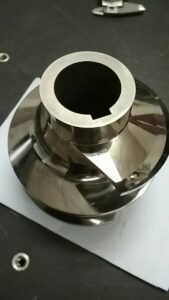CNC prototyping service manufacturers know that regardless of the benefit of prototyping in item advancement, there are some potential downsides to developing a prototype. For instance, there is a need to choose what number of prototypes and structure emphases will be adequate. Some portion of the reason for prototyping is to evaluate clients’ needs; in any case, there might be clashes among engineers and clients. When the clients demand over the top changes, how are clashes overseen? This prompts a related inquiry: how can one deal with the calendar for an improvement cycle that is basically open-finished? Will the prototype produce runaway desires from the client? Some of the time these issues are unavoidable, however they should be painstakingly overseen and arranged.
How are runaway desires forestalled? The key is item execution and the desires from the client. There are a few different ways to determine the issues, for example, to incorporate the normal execution with the prototype, to create reasonable details, to recognize essential and optional prerequisites, and to give clients an intensive lesson in prototype turn of events. Giving the client an intense training in prototype advancement is additionally vital, as it will permit one and one’s client to be on the same wavelength as the task advances. This is key as the advancement of reasonable particulars will warrant one to recognize essential and auxiliary prerequisites so as to meet the clients’ actual anticipated needs.
How can one realize when to quit prototyping? It is firmly identified with the prototyping objectives. At the end of the day, one can say that one is finished with prototyping when the prototype meets all the prerequisites of the last framework, when the prototype has a constrained reason (e.g., gathering starting necessities) and that reason has been accomplished, or when designers and clients mutually consent to proceed onward to the following stage. A few people may state that it is done when one uses up all available time or cash. It might be genuine given that it is arranged from the earliest starting point. In the event that a prototyping action is ended because of absence of time or cash before the targets are accomplished, the prototyping action comes up short.
A typical mix-up is starting an item developing venture by developing a full prototype of the last item – what it will resemble, how it will work, etc. A misinterpretation is that the closer one’s prototype is to the real thing, the better the assessment will be.
All the time, one may locate that one despite everything has such huge numbers of structure choices to attempt, yet the time or cash is running out. At the end of the day, over commitment of assets to one prototype from the get-go in a procedure without looking at different choices is a helpless building structure. A prototyping swamp happens when there is a misinformed prototyping exertion that doesn’t generally add to the objectives of the general item improvement exertion. It prompts longer item advancement time and more costly item, and could prompt the disappointment of the whole item development venture. Table 2.1 shows a portion of the current prototyping exercises that are impacted by two factors, the prototyping cost and mechanical hazard. For instance, a generally safe and ease far reaching prototyping case could be to print a report. For this situation, one far reaching prototype, ie., a full printed version of the report, could be utilized for conclusive approval. It happens in some precision cnc communication components factory.
A high-hazard and minimal effort case could be to create programming. For this situation, numerous far reaching prototypes, that is, numerous adaptations of the product might be created and tried. An okay and significant expense case could be to assemble a house. For this situation, no thorough prototypes might be created. For this situation, the main prototype is additionally the item itself. A high-hazard and significant expense case could be to construct a plane. For this situation, no extensive prototypes will be created. Nonetheless, so as to decrease the dangers, numerous investigative or centered prototypes might be grown from the get-go in the stage. For this situation, the principal comprehensive prototype is additionally the item itself.
The decision to prototype an undertaking either genuinely or diagnostically ought to consistently be chosen dependent on an assortment of its general cost compromise, process duration to finish, precision of prototyping the part, material properties to be assessed, the part size, quality, its accessibility, and so forth.
Other normally observed errors in the prototyping procedure incorporate (1) duty too soon to a specific structure; (2) increasing a bogus perspective on how long the framework will take to finish dependent on the time taken to prototype; (3) too many plan emphases that could prompt support and additionally operational issues related with past renditions; (4) the exhibition qualities of prototypes misdirected the client; and (5) using materials or strategies that don’t mirror the last structure, prompting mistaken execution information.
This article is from http://www.prototypechina.com/
